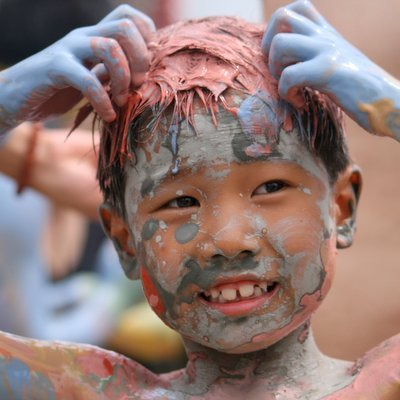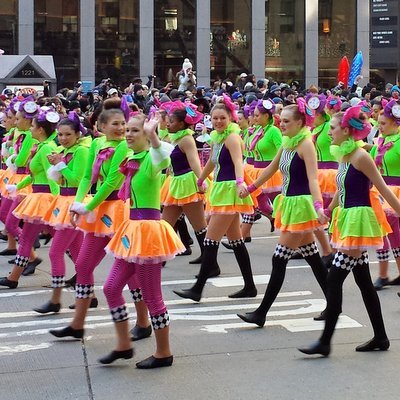Ready to immerse yourself in Bali’s age-old sacred philosophy Tri Hita Karana, believed to rid worshippers of evil, bless the environment and restore the harmony between the gods, demons, mankind and nature? Then mark your calendar to behold the distinctive Hindu celebrations that commemorate the beginning of the Saka lunar year—falling over six days in March.
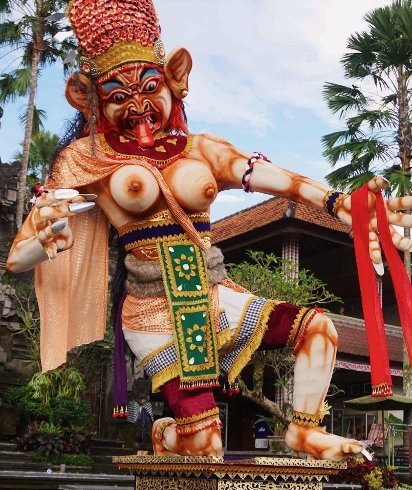 The Balinese ceremoniously prepare for their New Year, Nyepi, with Melasti, a highly devotional affair in which villagers purify both Bhuana Alit (the small cosmos hosting mortals) and Bhuana Agung (the greater universe) to chase away malevolent spirits and sanctify the mystical deities. It is all immensely orchestrated such that every Banjar (hamlet) is assigned a precise beach and ritual schedule, to circumvent throngs and preserve the reverential atmosphere.
The Balinese ceremoniously prepare for their New Year, Nyepi, with Melasti, a highly devotional affair in which villagers purify both Bhuana Alit (the small cosmos hosting mortals) and Bhuana Agung (the greater universe) to chase away malevolent spirits and sanctify the mystical deities. It is all immensely orchestrated such that every Banjar (hamlet) is assigned a precise beach and ritual schedule, to circumvent throngs and preserve the reverential atmosphere.
I hired a guide and set my alarm for 3:30 a.m. to begin my journey to the seaside to join one festival at Padang Galak in the Sanur area. As luck would have it, the incessant drizzle morphed into fair skies and cool breezes, providing the perfect backdrop for us to survey the continuous stream of celebrants as they poured in.
 The men were dressed in conventional, formal white attire, sporting udengs, elaborate headdresses. Meanwhile, the women wore their most exquisite kebayas—a long, fitted, lacey tunic complemented with a decoratively embroidered under-corset and cinched with a fanciful outer cummerbund. This ensemble was paired with an ankle-length kamen or sarong—secured with a wide sash at the midsection, called a sabuk. A convivial, yet sober mood prevailed with about 1,000 neighbours, from geriatrics to toddlers, paying their respects.
The men were dressed in conventional, formal white attire, sporting udengs, elaborate headdresses. Meanwhile, the women wore their most exquisite kebayas—a long, fitted, lacey tunic complemented with a decoratively embroidered under-corset and cinched with a fanciful outer cummerbund. This ensemble was paired with an ankle-length kamen or sarong—secured with a wide sash at the midsection, called a sabuk. A convivial, yet sober mood prevailed with about 1,000 neighbours, from geriatrics to toddlers, paying their respects.
Nobody came empty handed. Ladies balanced on their heads gold or silver carved bowls, brimming with colourful home-made bantens, offerings of cakes, fruits, flowers, betel leaves, bits of lime, slivers of areca nuts and rice. The gents hauled all sorts of classic parasols, consecrated sculptures known as pratima, and cone-shaped floats containing their temples’ hallowed paraphernalia—statuettes, swords, barongs, rangda effigies and traditional dance clothes.
The objects were meticulously arranged on a massive table in front of the shrine overlooking the ocean, with the soothing percussion of waves crashing on the beach below. As attendees gradually settled into their places on the cosy, otherworldly platform, plumes of incense filled the air, and the repetitive melodies and rhythms of beleganjur gamelan instruments, gongs, cymbals and drums dazzled our senses.
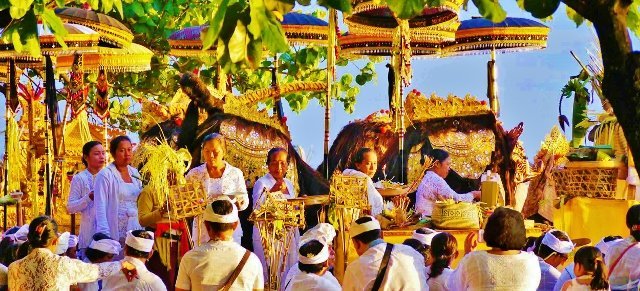
The highest-ranking Brahmin village priestess sat cross-legged on an elevated throne and led the puja, chanting mantras, making graceful hand movements, twirling frangipani petals in her fingers, and ringing her prayer bell, whilst sandalwood smoke wafted overhead. Community elders vigorously flicked holy water and grains on the sacrosanct accessories and devotees to purge negativity and attract prosperity, as everyone prayed silently en masse—oblivious to the foreigner in the back respectfully observing the proceedings.
During the two-hour rites, the sky slowly awoke, and a soft amber glow peeked over the horizon, emerging into a magnificent display of radiant tangerine, persimmon, scarlet, crimson and violet. The fiery sunrise gifted us with dramatic views of the offshore isles—Nusa Penida, Nusa Lembongan and Lombok—as well as the legendary Mt. Agung volcano, with its misty crown of clouds. As the entire open-air temple was eventually bathed in warm morning rays, our hearts were bursting with gratitude to have experienced this precious, solemn service.
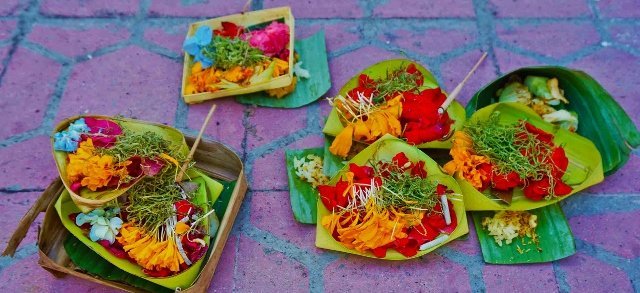
Two days later, on New Year’s Eve Day, Pengerupukan, there was a sense of excitement as every district put the finishing touches on their hand-crafted, ferocious-looking effigies called Ogoh-ogoh. Lovingly constructed over several months using wood, papier mâché, styrofoam, cloth and tinsel, these grotesque statues of hideous creatures measured nearly five metres (16.5 feet) tall. Representing mythological figures, they symbolised the adverse energy exuded from beings (especially humans) and, on this day, they would be used to rouse any dark forces lurking nearby, so offerings could be made to be appease them.
 Ogoh-ogoh parades were held mostly in the late afternoon or at dusk. We opted to participate in a major one in Ubud, despite the traffic jams and large crowds during Bhuta Yajna. The street party was quite animated, as residents jubilantly carried the Ogoh-ogoh on bamboo platforms, shaking and rotating them counter-clockwise three times at every T-junction and crossroad—intending to baffle the demonic spirits, so that they would give up and disappear.
Ogoh-ogoh parades were held mostly in the late afternoon or at dusk. We opted to participate in a major one in Ubud, despite the traffic jams and large crowds during Bhuta Yajna. The street party was quite animated, as residents jubilantly carried the Ogoh-ogoh on bamboo platforms, shaking and rotating them counter-clockwise three times at every T-junction and crossroad—intending to baffle the demonic spirits, so that they would give up and disappear.
Time-honoured gamelan bands and drummers added to the merriment, zigzagging for blocks from the Ubud Royal Palace down Jalan Monkey Forest to the football field. In some communities, the custom is to still burn the characters in a final act to eradicate all impurities; though the Ubud Council raised ecological concerns about burning polystyrene—which releases toxic chemicals and vapours—nixing that aspect of the ritual.
From 6 a.m. the next day and for the subsequent 24 hours, the Balinese celebrated Nyepi, a Day of Introspection, when everything comes to a grinding halt, and the focus is simply on detoxing and renewal. For a full day, each citizen practices the four precepts of Catur Brata Penyepian:
Amati Geni (no fire/light), which means Bali plunges into utter blackness at night, so that afflictive emotions—like anger, hatred, jealousy and greed—can be expelled
Amati Karya (no activity), wherein physical work is forbidden, and all businesses are closed, except emergency public services
Amati Lelungaan (no travel), requiring everybody to stay at home, emptying the roads, ports, and even the airport
Amati Lelanguan (no entertainment), forbidding all forms of recreation, talking, and communicating on social media
 Once a year, Bali’s high energy level is replaced by sweeping tranquillity, with its people giving back to Earth—secluded, fasting, meditating and making New Year’s resolutions—in a bid to regenerate the whole island. As a guest, you are confined to your hotel’s premises, so I researched how the resorts manage the holiday and chose a boutique property outside of Ubud that was remote enough that they could be relaxed with their protocols. We were able to enjoy the facilities, dine in their main restaurant, turn on low lights in our rooms, and even take a variety of classes, if we wanted.
Once a year, Bali’s high energy level is replaced by sweeping tranquillity, with its people giving back to Earth—secluded, fasting, meditating and making New Year’s resolutions—in a bid to regenerate the whole island. As a guest, you are confined to your hotel’s premises, so I researched how the resorts manage the holiday and chose a boutique property outside of Ubud that was remote enough that they could be relaxed with their protocols. We were able to enjoy the facilities, dine in their main restaurant, turn on low lights in our rooms, and even take a variety of classes, if we wanted.
Immediately following the Day of Silence is Ngembak Geni, a day of contemplation on love, kindness and patience. Though all the hustle bustle resumed, the lion’s share of Balinese extended their rejuvenated purity by dropping in on friends and family to ask for forgiveness and make a fresh start going forward.
Not all travellers will be interested in visiting Bali during Nyepi, but for me, it was a sublime opportunity to submerge myself in the unique traditions and observances honouring the relationship between the divine, society and our planet. At dawn, I practiced yoga and relished a restful day of meditation and massage, tuning into this blessed respite with reverence for a holistic reboot.

The ambiance was noticeably quieter, and the air was pollution-free. But, the icing on the cake was after sunset—when the cloudless, moonless heavens majestically showcased the huge arc of the Milky Way. As I lay by the pool, it seemed as if all four billion of our galaxy’s stars were glittering above me, reminding me how tiny we are within the universe’s grand architecture. This awe-inspiring New Year grounded me and left me feeling profoundly connected to the magic of the Island of the Gods.
Note: Nyepi always starts at 6 a.m. and lasts for 24 hours:
- 2019: 7 March
- 2020: 24 March
- 2021: 14 March
- 2022: 3 March
- 2023: 22 March
- 2024: 11 March
- 2025: 29 March
Cindy Payne is a Singapore-based adventure travel writer and photographer who has her own blog Cindy’s Travel Tales.
All content images © Cindy's Travel Tales



